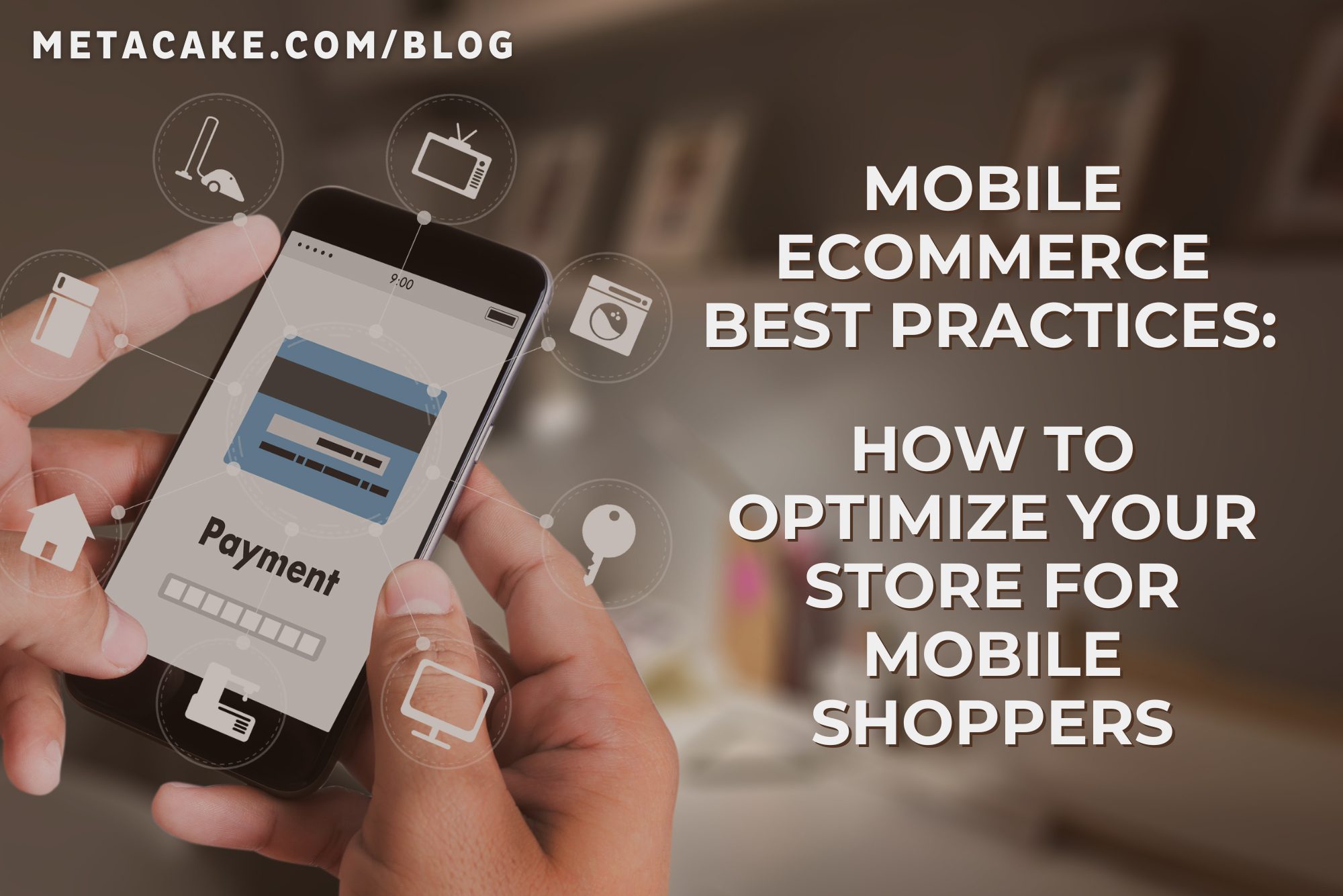Mobile eCommerce optimization best practices: Enhancing Your Online Store for Mobile Users
In today's digital age, optimizing your eCommerce website for mobile users is paramount for success. This guide delves into the best practices to ensure your online store is fully optimized for mobile devices, providing a seamless shopping experience for your customers.
As we explore the key aspects of mobile eCommerce optimization, you'll gain valuable insights on how to drive conversions and enhance user satisfaction on mobile platforms.
Importance of Mobile eCommerce Optimization

In today's digital landscape, optimizing for mobile eCommerce is crucial for businesses looking to stay competitive and reach a wider audience. With the increasing use of smartphones and tablets for online shopping, having a mobile-friendly eCommerce platform can significantly impact a company's success.
Key Differences between Mobile and Desktop eCommerce Optimization:
- Screen Size: Mobile devices have smaller screens, requiring a more streamlined and user-friendly design for easy navigation.
- Touch Navigation: Mobile users rely on touch gestures, making it essential to optimize for intuitive and responsive touch controls.
- Load Speed: Mobile users expect fast loading times, necessitating optimization for quicker page load speeds.
Statistics on the Growth of Mobile Shopping:
"Mobile commerce sales are projected to reach $3.56 trillion by 2021, accounting for 72.9% of all eCommerce sales worldwide."
"Over 50% of online traffic comes from mobile devices, highlighting the importance of optimizing for mobile users."
Responsive Design and User Experience

Responsive design plays a crucial role in optimizing mobile eCommerce websites. It ensures that the site adapts to different screen sizes and devices, providing a seamless user experience regardless of the device being used. This is essential for increasing conversions and retaining customers on mobile platforms.
Importance of Responsive Design
- Responsive design improves user experience by making the site easy to navigate and interact with on mobile devices.
- It helps in increasing mobile conversions as users are more likely to make a purchase if the website is user-friendly and visually appealing.
- Having a responsive design also boosts performance, as search engines prefer mobile-friendly websites in their rankings.
Enhancing User Experience for Mobile Conversions
- Optimizing navigation: Simplify the menu structure and ensure easy access to important pages such as product categories, search bar, and shopping cart.
- Improving search functionality: Implement filters, sorting options, and autocomplete features to help users find products quickly and easily.
- Streamlining checkout process: Reduce the number of steps required to complete a purchase, offer guest checkout options, and provide secure payment methods to enhance user experience.
Page Speed and Performance
Page speed is crucial for mobile eCommerce sites as it directly impacts user experience, bounce rates, and ultimately, conversion rates. Slow loading times can frustrate users and lead them to abandon their shopping carts, resulting in lost sales. Therefore, optimizing page speed and performance is essential for the success of any mobile eCommerce business.
Optimizing Images and Content
Images and content play a significant role in page speed optimization. Here are some best practices to improve loading times:
- Compress images: Use tools like Adobe Photoshop or online services to compress images without compromising quality.
- Optimize content: Minimize unnecessary elements, reduce server requests, and leverage browser caching to speed up loading times.
- Lazy loading: Implement lazy loading for images and videos to ensure that only the visible content is loaded initially, improving overall performance.
Monitoring and Improving Performance
To monitor and enhance mobile site performance, consider the following tools and techniques:
- Google PageSpeed Insights: This tool provides insights into page speed performance and offers suggestions for improvement.
- GTmetrix: Analyze your site's speed and performance metrics, identify bottlenecks, and receive actionable recommendations for optimization.
- Content Delivery Network (CDN): Utilize a CDN to distribute content across multiple servers geographically, reducing latency and improving loading times.
- Caching: Implement browser caching and server-side caching to store frequently accessed data, reducing load times for returning visitors.
Mobile Strategies
Mobile plays a crucial role in optimizing your mobile eCommerce website for better search visibility and ranking on search engine results pages. By implementing effective strategies specifically tailored for mobile devices, you can attract more organic traffic and improve your overall online presence.
Differences Between Mobile and Desktop Tactics
- Mobile-first indexing: Google primarily uses the mobile version of a site for indexing and ranking, so optimizing for mobile is essential.
- Page speed: Mobile users expect fast loading times, so optimizing for speed is crucial for mobile success.
- Local : Mobile searches often have a local intent, so optimizing for local search is important for mobile eCommerce websites.
- Voice search: With the rise of voice search, optimizing for voice queries can improve your mobile performance.
Tips for Optimizing Mobile Content, Meta Tags, and Site Structure
- Optimize content for mobile: Create concise, engaging, and mobile-friendly content that is easy to read on smaller screens.
- Use responsive design: Ensure your website is responsive and adapts to different screen sizes for a seamless user experience.
- Optimize meta tags: Write compelling meta titles and descriptions that are relevant to mobile users and include relevant s.
- Improve site structure: Make sure your site is easy to navigate on mobile devices, with clear menus, internal linking, and a mobile-friendly design.
- Focus on local : Optimize your site for local search by including location-based s, creating local landing pages, and optimizing Google My Business listings.
Mobile Payment Options

Mobile commerce has seen a significant increase in recent years, with more consumers opting to make purchases through their mobile devices. Providing a variety of mobile payment options on your eCommerce site is crucial to cater to the needs of mobile users and enhance their shopping experience.
Various Mobile Payment Options
- Mobile Wallets: Mobile wallets like Apple Pay, Google Pay, and Samsung Pay allow users to store their payment information securely and make quick and convenient payments using their smartphones.
- Mobile Banking Apps: Many banks offer mobile banking apps that enable users to transfer funds, pay bills, and make purchases directly from their bank accounts.
- Mobile Payment Gateways: Payment gateways such as PayPal, Stripe, and Square provide secure payment processing solutions for mobile transactions, offering a seamless checkout experience for customers.
It is important to offer a mix of mobile payment options to accommodate different preferences and increase conversion rates.
Benefits of Different Payment Gateways
- PayPal: Widely recognized and trusted by consumers, offering a secure payment experience with buyer protection and fraud prevention measures.
- Stripe: Known for its developer-friendly platform, seamless integration, and customizable checkout options for businesses of all sizes.
- Square: Ideal for small businesses, providing easy setup, transparent pricing, and a user-friendly interface for mobile payments.
Security Measures for Secure Mobile Transactions
- Use SSL encryption to secure sensitive data transmitted during transactions.
- Implement two-factor authentication to add an extra layer of security for user accounts.
- Regularly update your eCommerce platform and payment gateway to patch security vulnerabilities.
Mobile App vs. Mobile Website
Mobile commerce has seen a significant rise in recent years, with businesses looking to optimize their online presence for mobile users. When it comes to deciding between a mobile app and a mobile website for eCommerce purposes, there are advantages and disadvantages to consider.
Advantages and Disadvantages
- Mobile App:
- Advantages:
- Enhanced user experience with personalized features.
- Ability to send push notifications for promotions and updates.
- Access to device features like camera and GPS for innovative functionalities.
- Disadvantages:
- Requires users to download and install the app, leading to potential drop-offs.
- Higher development and maintenance costs compared to a mobile website.
- May not be compatible with all devices and operating systems.
- Advantages:
- Mobile Website:
- Advantages:
- Accessible through a web browser without the need for installation.
- Cost-effective development and maintenance compared to an app.
- Compatible with a wide range of devices and operating systems.
- Disadvantages:
- Limited access to device features for advanced functionalities.
- Less engaging user experience compared to a mobile app.
- Dependent on internet connectivity for optimal performance.
- Advantages:
When to Invest in a Mobile App
In certain scenarios, investing in a mobile app for eCommerce can be beneficial, especially when:
- There is a need for advanced features that require access to device functionalities.
- Building a loyal customer base through personalized experiences is a priority.
- Push notifications for promotions and updates can significantly impact user engagement.
Promoting and Driving Traffic to Mobile App or Website
To increase visibility and traffic to your mobile app or website, consider implementing the following strategies:
- Optimize app store listings with relevant s and compelling visuals.
- Utilize social media and email marketing campaigns to promote app downloads or website visits.
- Implement app indexing and deep linking to boost app discoverability and engagement.
- Offer incentives such as discounts or exclusive deals for users who download the app or visit the website.
Final Wrap-Up
In conclusion, implementing these best practices for mobile eCommerce optimization can significantly impact your online business. By focusing on responsive design, page speed, strategies, payment options, and the choice between a mobile app or website, you can create a user-friendly experience that boosts sales and customer loyalty.
Quick FAQs
What are the key differences between mobile and desktop eCommerce optimization?
Mobile optimization focuses on smaller screen sizes, touch navigation, and faster load times compared to desktop optimization, which caters to larger screens and mouse-based interactions.
How important is page speed for mobile eCommerce sites?
Page speed is crucial for mobile sites as users expect quick loading times on their devices. Slow speeds can lead to high bounce rates and poor user experience.
What are the best practices for optimizing mobile content for ?
Optimizing mobile content involves using relevant s, creating mobile-friendly meta tags, and ensuring a responsive design that enhances user experience and search visibility.
Which are the popular mobile payment options available for eCommerce sites?
Popular mobile payment options include mobile wallets like Apple Pay and Google Pay, as well as traditional credit/debit card options.
What are the advantages of having a mobile app over a mobile website for eCommerce?
A mobile app offers enhanced user experience, push notifications, and offline access, while a mobile website provides broader reach and easier accessibility without the need for downloads.

